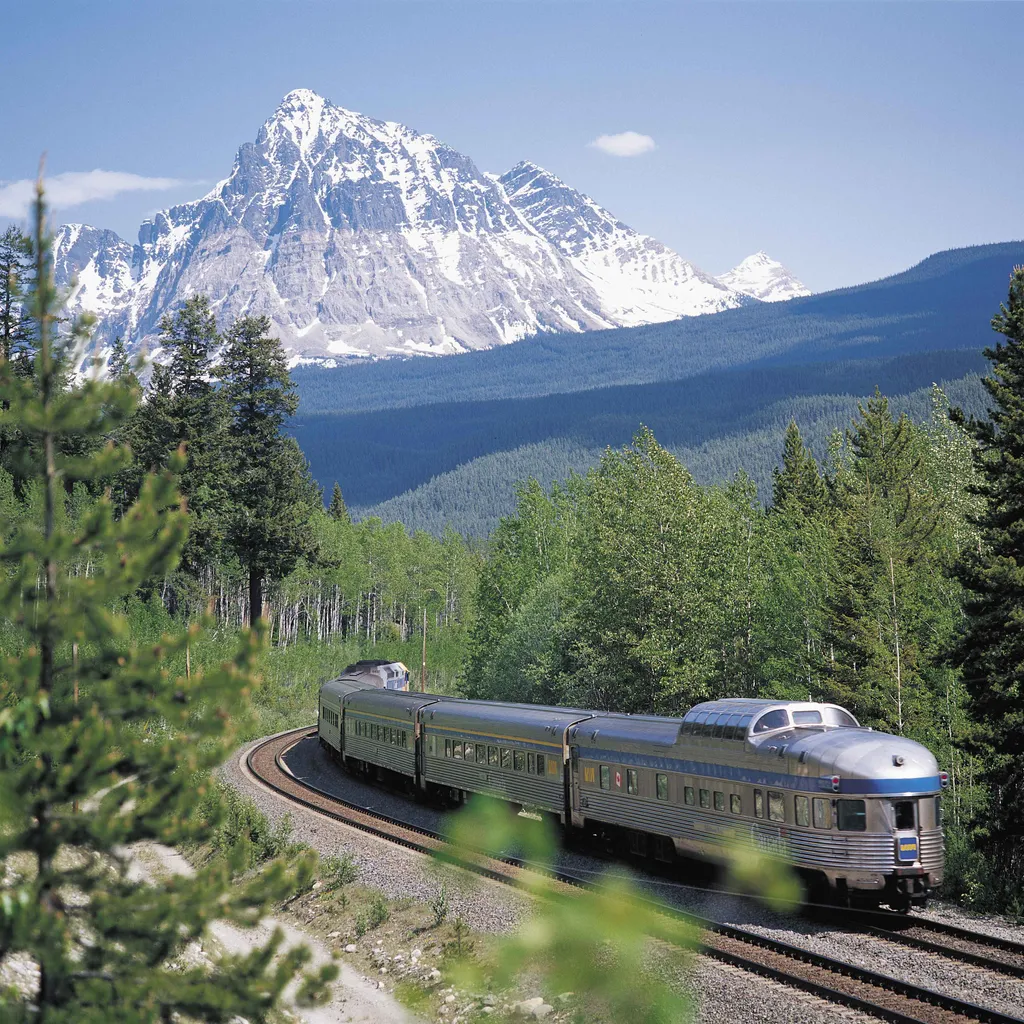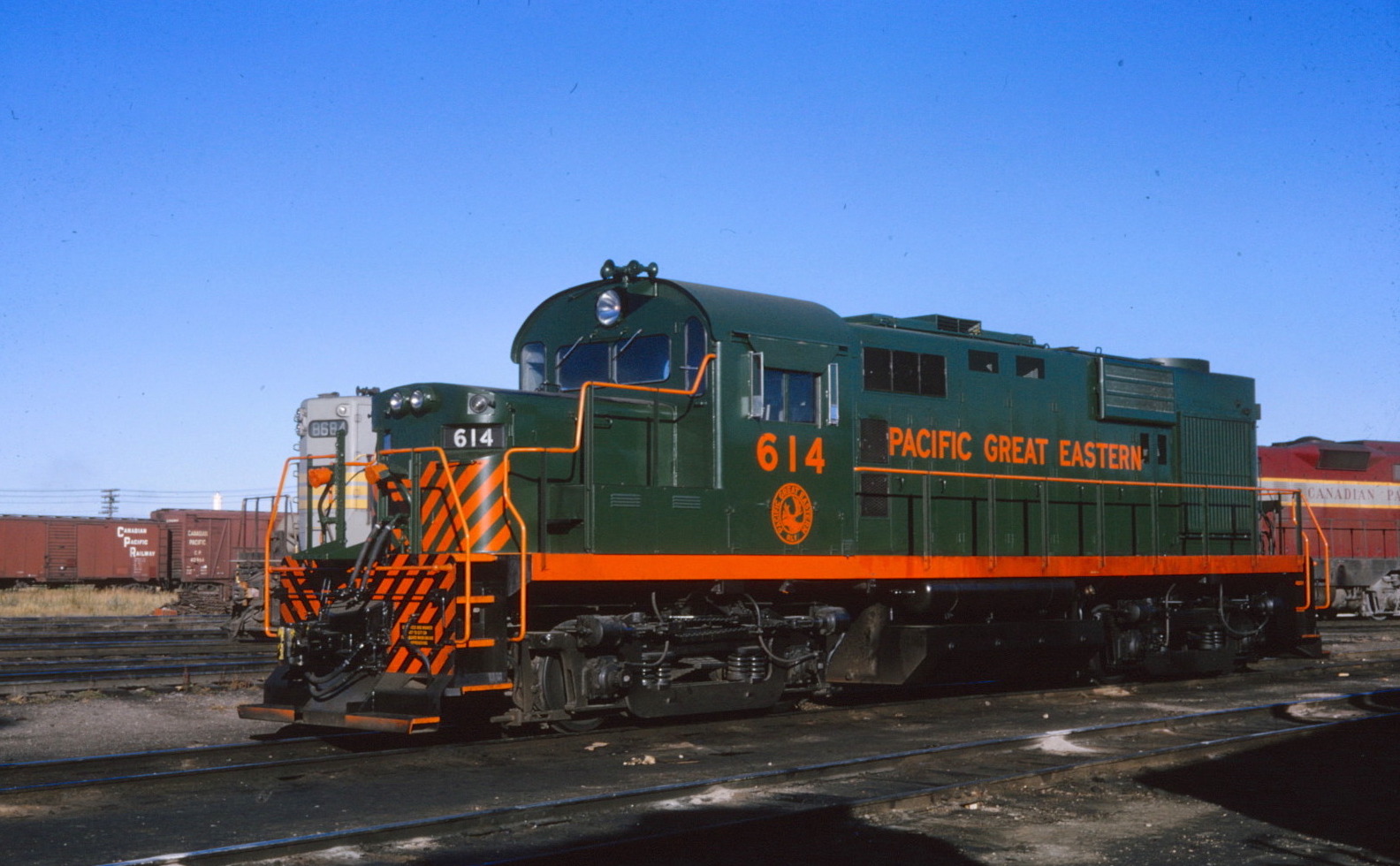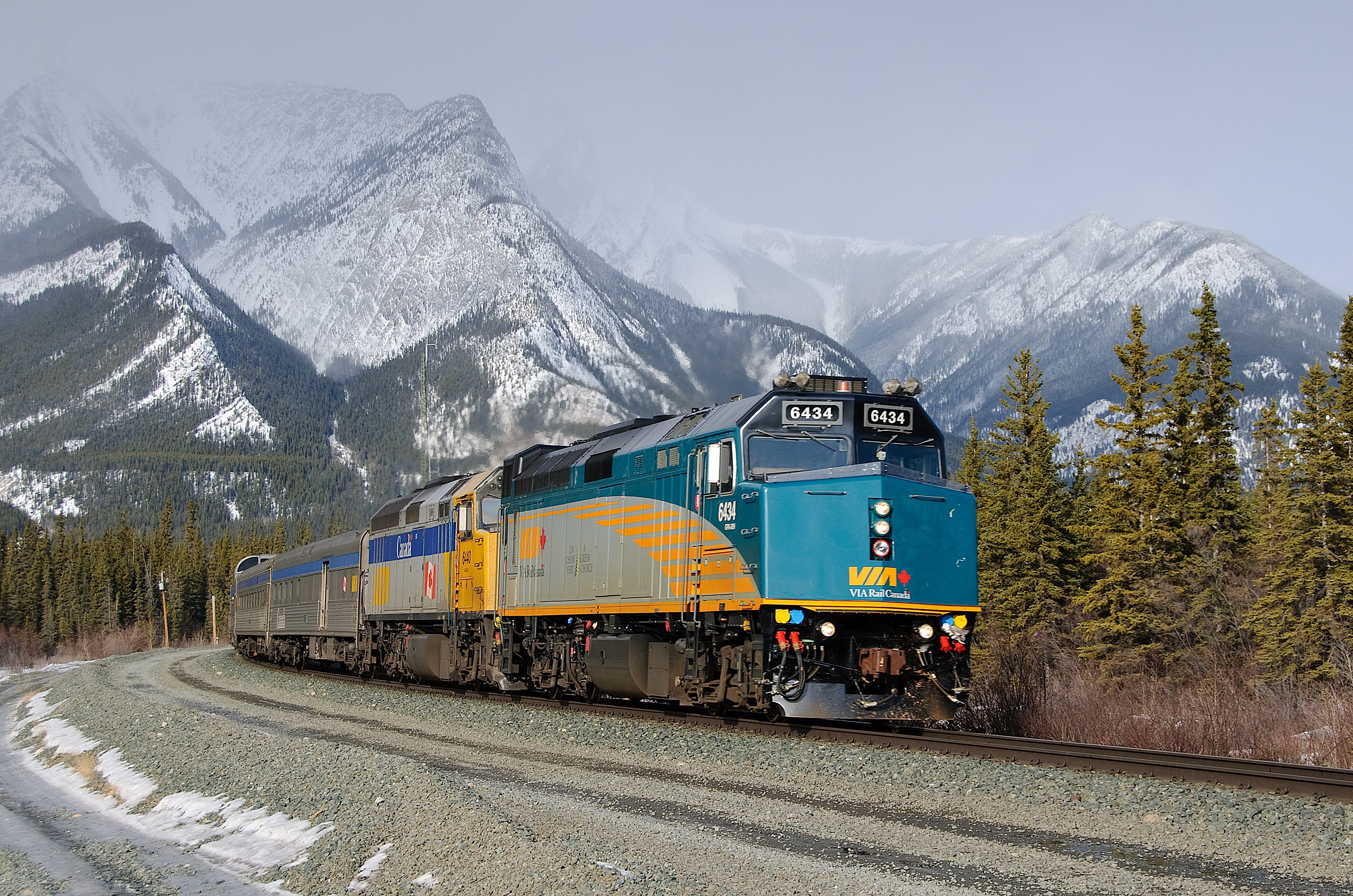As I mentioned, I purchased that book on the later years of the D&H, and they go pretty in-depth on the explanation of how the D&H ended up outside of Conrail and was supposed to be the token competition. Wow, what a mess.
The whole problem started just after 1958. The New York Central's stocks dropped badly, causing president Robert Young to commit suicide, and putting Alfred Perlmann in charge. Perlmann immediately realized that the New York Central could not survive as it was and began hunting for merger partners. Having been in charge of the C&O previously, and knowing that the C&O was quite healthy, he approached the C&O with the idea of a three-way merger: the NYC, the C&O, and the B&O. The B&O also had a controlling interest in the Reading, which in turn had a controlling interest in the CNJ, allowing the Reading and CNJ to bridge the gap between the B&O and NYC in the New York City/New Jersey area. Unfortunately for Perlmann, the C&O just wasn't that interested. The NYC's state of fragility and it's many passenger service obligations turned off C&O shareholders, and there were also concerns about the B&O's level of debt as well. The Pennsylvania Railroad, under James Symes, also screamed bloody murder that the merger, if pulled off, would lead to the PRR's demise. Perlmann spent quite a bit of time flying back and forth to Switzerland, trying to garner support from the C&O's foreign investors, but wasn't able to convince them, and the merger was dumped. Ironically, today, CSX, heavily comprised of the B&O and C&O, ended up with the majority of the New York Central after splitting Conrail, so the concept was sound, but the turmoil from the NYC and B&O's financial conditions probably wouldn't have worked well at the time.
At the same time, the PRR was also not in great shape. It was for all intents and purposes, a 1920s railroad running in the 1950s. There were almost no hump yards, all their interlocking towers were still manned, there was no Central Traffic Control, and they were still holding onto 4-track mainlines even without the traffic to warrant keeping them. The PRR also owned the Detroit, Toledo & Ironton, which it had paid dearly for to buy from Henry Ford, and they owned 97% of shares of the Lehigh Valley, which was the "one road too many" of the East and was in quite poor shape, and they also had 44% of the Norfolk & Western's shares. The N&W, like the C&O, was heavy on freight, light on passenger obligations and had no money-draining commuter operations, and so was quite healthy. The N&W shares that the PRR owned were keeping the PRR afloat in the 1950s, and the PRR was even paying dividends solely off the money that the the N&W shares were paying them. With the NYC-B&O-C&O merger dead in the water, the NYC approached the PRR about a merger between the two.
On December 1st of 1959, the Norfolk & Western bought up the Virginian Railway, the "richest little railroad in the world" which possessed a 55% operating ratio that was the envy of the industry. The Virginian had long been a thorn in the side of the C&O and the N&W and the N&W was only to glad to scoop it up. Also, shortly after the N&W had purchased the Virginian, the Erie Railroad and the Delaware, Lackawanna & Western announced a formal merger, after years of consolidating operations, and became the Erie-Lackwanna Railroad. Then, just three months later, the N&W also made the announcement that it intended to also merge the Nickel Plate Road into them as well. Through negotiation with the ICC and other railroads, this merger also grew to include the Wabash, the Wheeling & Lake Erie, the Akron, Canton & Youngstown, and the Pittsburgh & West Virginia, and the N&W also purchased the PRR's 111-mile line between Sandusky and Columbus, making this the first modern mega-merger. In response, the C&O acquired a controlling interest in the B&O and began consolidating operations between the two, although they didn't dive into an exact merger.
The PRR's hold on the Norfolk & Western caused a lot of consternation at the ICC though. The N&W/NKP/WAB merger paperwork hit the desk at the ICC almost the same time as the PRR/NYC merger paperwork and they were worried the PRR/NYC merger would end up with control of the N&W after the merger and make a giant railroad that would shut out every other competitor. The ICC gave the N&W the go-ahead after two years of proceedings, and the NKP, Wabash, W&LE, AC&Y, and P&WV all ceased to exist on October 16th 1964, rolled up into Norfolk & Western. The ICC also added a provision that at any time within five years after the merger, the Boston & Maine, Delaware & Hudson, and Erie-Lackawanna could seek inclusion into the new N&W system and that N&W would have to buy out their stocks at a rate set by the ICC.
No sooner had that merger cleared, the N&W and the C&O, and the B&O with it, began talks of a merger. The two were concerned that once the merger between the PRR and the NYC went through, they would be facing a giant railroad that had the potential to clobber both of them. They believed they would be more likely to get the ICC to approve this merger if they included the various smaller lines that would be hard-pressed to combat with the NYC/PRR conglomerate and the merged NYC/PRR. So, they set up a holding company that was originally called DERJCO, standing for Delaware & Hudson/Erie-Lackawanna/Reading/Jersey Central Company. They then decided that was too hard to pronounce and renamed it to Dereco. The idea was that the Dereco lines would operate as feeder lines for the two major systems and handle local traffic. The CNJ and the Reading were already controlled by the B&O, and so had no real say in the plan, but they had to convince the independent D&H and E-L to join in. The day after forming Dereco, the N&W and C&O met with Erie-Lackawanna representatives and hit them with a rather heavy-handed "take it or leave it" offer, which irked the E-L representatives and caused them to walk out, putting the brakes on the Dereco idea.
Then, on September 28th, 1965, the Erie-Lackawanna did an about-face and petitioned for the N&W to buy out the E-L under the 1964 N&W/NKP/WAB merger. By this point, the NYC/PRR merger was still ongoing but the ICC had moved to force the two railroads to also include the bankrupt New York, New Haven & Hartford into the merger as well. The Erie-Lackawanna was now going to lose it's friendly interchange partner into New England, and was going to have to try and compete against the giant merged NYC/PRR. The N&W knew that the E-L's otherwise healthy finances were being bled dry by NJ commuter obligations though, and wanted nothing to do with E-L, and so a series of court cases dragged on for two years, with the N&W fighting to keep the E-L out and the ailing E-L trying to get the 1964 agreement honored. Finally, after going all the way to the Supreme Court, the N&W was forced to take in the E-L, the D&H and the B&M, if those railroads wanted,and the N&W would have to buy them out prices set by the ICC . The E-L of course wanted in, and the D&H hoped that the cash infusion would do them good, although the D&H was still fairly profitable at the time. The Boston & Maine though foolishly held out, hoping for a better offer from the N&W for the buyout, oblivious to the fact that the ICC was the one who had set the rates. When the B&M went bankrupt in 1970, they tried to take the offer they had been given, only to learn that the ICC provision was only good for five years and had expired the year before, meaning that the N&W was no longer obligated to buy them out. And the N&W indeed, did not buy the B&M out. Due to the precarious financial situation that this unexpected buyout placed the N&W in, the merger with the C&O was placed on temporary hold.
At the same time as the ruling on E-L's inclusion into Dereco, the ICC came out and said that as a part of the PRR/NYC merger, the PRR would have to sell off all of the N&W shares, the same shares that had been keeping the PRR's head above the water, within ten years of the merger date. The PRR was also supposed to either sell off the Lehigh Valley, or set it afloat as an independent railroad, but they never actually did that and likely no one would have wanted the LV anyways. The ICC also forced NYC and PRR to take the bankrupt New York, New Haven & Hartford in one year after the merger date. The resulting giant, called Penn Central, came into existence on February 1st, 1968.
The D&H's hope for an influx of cash under Dereco never really came true. N&W viewed the E-L as the real prize of the two, since the eastern end was quite well engineered and it's route to Buffalo had massive clearances and bypassed most cities, making it good for long-haul runs. The D&H was viewed more as a nuisance, and so under the Dereco arrangement, the D&H was basically placed under the E-L's control. A lot of D&H management was siphoned off to the E-L during this era, and being sent to the D&H was viewed as a sort of exile or punishment. The irony was that the Erie-Lackawanna was bleeding cash at a rapid rate, thanks to those NJ commuter operations, while the D&H was still turning a pretty decent profit. Meanwhile, by 1970, it became obvious that Penn Central wasn't the boogeyman that C&O and N&W had thought it was going to be, and so both railroads quiety dropped their plans for a merger entirely.
The early '70s were a mixed bag for the D&H. Being partnered with the E-L under Dereco allowed smoother operation of run-through services. Even though B&M wasn't part of Dereco, there was still a close relationship with them , resulting in freight coming out of Chicago on the E-L, then transferring to the D&H at Scranton and then transferring to the B&M at Mechanicville and heading to pretty much anywhere in New England. While coal, particularly anthracite traffic fell off, paper products from New England continued to be a big industry, and was one of the primary cash cows of the D&H. Also, as Penn Central immediately fell into chaos, many customers chose to divert traffic off of the PC and over the E-L/D&H/B&M routing for more secured delivery in exchange for a somewhat slower and more expensive shipping. The mysterious burning of the Poughkeepsie Bridge broke the link between Penn Central and the Lehigh & Hudson River, forcing more traffic over the D&H, although at the expense of the L&HR (the book recounts that when the fire broke out, the L&HR president called the D&H and said "Well, the Poughkeepsie Bridge is burning, we're finished"). But on the flip side, the decaying service of Penn Central also drove money customers completely away from rail travel. Also, by 1974, every single American interchange partner with the D&H was completely insolvent (CP and CN north of the border were still in the black). The CNJ was bankrupt for the third time in 1967, and pulled completely out of PA in 1972, severing it's link with the D&H. The Penn Central went bankrupt in 1970 and the federal government soon made it so that while all other railroads had to pay the PC, the PC didn't have to pay any other railroads on their debts. They also idled the Sunbury line, severing the former PRR link to the D&H. The immediate ripple dragged other railroads down. The Lehigh Valley, still controlled by Penn Central, had always been a superfluous railroad in the markets it served and had been gutted by the loss of cement traffic due to the ICC deregulating cement haulage on the highways, and it bankrupt one month later. The Boston & Maine went bankrupt in 1970 after foolishly missing the train (pun intended) to join Dereco. The Erie-Lackawanna was devastated by Hurricane Agnes in 1972 when it wiped out 135 miles of it's mainline, and was dumped from Dereco by N&W.
The solution for the northeastern collapse actually came from an earlier proposal by Union Pacific, of all railroads. Uncle Pete had been watching the rapidly deteriorating situation in the north east and was concerned, since 25% of their interchange traffic came and went from that region. They knew that if things came completely undone in the northeast, it stood to effect them as well. UP's suggestion was that the federal government revive the United States Railway Administration concept and use it to hammer out a plan with the northeast. The original idea was to merge Penn Central with most of the smaller railroads (Reading, L&HR, LV, CNJ) to form Conrail and leave the Erie-Lackawanna as a competitor to Conrail to prevent a monopoly. Erie-Lackawanna at the time covered most of the same regions, was making advancements in piggyback train technology, and was starting to show signs of being a profitable railroad. The costly New Jersey commuter operations would be handed off to Conrail and subsidized by federal and state governments until a new operator could be found (what became New Jersey Transit). Unfortunately, Hurricane Agnes destroyed that plan at the same time that it wiped out the E-L's mainline.
The USRA's backup plan involved Chessie Systems. A holding company that jointly operated the C&O, B&O and Western Maryland with the C&O basically in charge, Chessie Systems was going quite strong at the time, and served a fair amount of the markets that Conrail would also serve, as well as being roughly equivalent size. The idea was that Chessie Systems would be handed the Erie-Lackawanna from Sterling, Ohio east (the west end would be abandoned) as well as the Reading to "fill in the blanks" in the Pennsylvania region. Chessie Systems was on board with the plan, and sat down to make labor agreements with E-L and Reading employees. Again, the E-L was the wrench in the works. Chessie Systems wanted E-L and Reading employees to operate under C&O's more modern labor plans, with three-man crews, but neither railroad would budge. Chessie Systems tried extending an olive branch, by instead offering them the B&O's slightly more onerous labor agreements, which were still better (from a business sense) than the E-L's, which required 6-man crews. Reading was willing to come to the table, but the E-L refused to even negotiate with Chessie Systems, and the federal government tried to take the stance that it would be easier to convince Chessie Systems to agree to the E-L's demands than the other way around. At the eleventh hour, Chessie Systems stunned the USRA when they walked away from the deal, leaving them with no railroad to fulfill the requirement of offering competition to Conrail.
At the same time, the D&H was trying to get a loan from the USRA. The D&H had seen that with the formation of Conrail, they could form a vital link as N&W and Chessie's bridge line to New England and Canada, and so was interested in staying independent from Conrail. D&H wanted a $37 million loan to purchase the Wilkes-Barre branch from Penn Central to make new connections, to purchase 20 new EMD GP39-2s, and to refinance long-term debts. The USRA instead chose to use the opportunity to strongarm the D&H into Conrail's competition. They threw down the terms of "take a $26 million loan and become Conrail's competition or go bankrupt", knowing that they had the D&H over a barrel. Everyone knew that it was a bad plan, that the D&H wasn't large or strong enough to function in that role and that the whole thing was thrown together too fast and without enough thought, but there wasn't another option at that point in time. The D&H took the deal, receiving $11 million less than they needed, and almost overnight the D&H went from a 700 mile bridge line to a 1400 mile railroad. The problem was, none of it was well-thought or enforced. The D&H was handed trackage rights to locations like Philadelphia, Buffalo, and Potomac Yard in Alexandria but was only allowed to serve trains to the terminals. They were not allowed to pursue customers anywhere along those trackage rights. Those rights over Conrail also had no way of ensuring fair treatment, and Conrail had no intentions of playing nice. D&H trains were stuck in yards for hours on end, thrown in every passing siding they came to, and there was nothing the D&H could do about it. Also, while Conrail was given billions of dollars that they never had to pay back, the money that the D&H was given was a loan that had to be paid back. And even then, it wasn't even the amount of money that the D&H had needed to keep running with what they had, let alone when they doubled in size. The whole thing was basically guaranteed to fail, and resulted in D&H coming back several times for further loans and then eventually being put up for sale by N&W and sold to Guilford Rail for $500,000.


























































